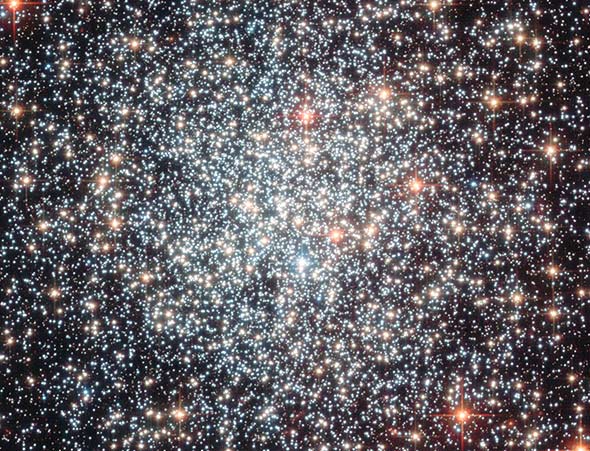Create a free profile to get unlimited access to exclusive videos, sweepstakes, and more!
A Companion’s Glittering Beehive

We live in the Milky Way, a gigantic galactic disk of stars, gas, and dust. Our galaxy also has several smaller companion galaxies, mostly elliptical and irregular dwarf galaxies. One of them is called the Large Magellanic Cloud, about 160,000 light-years away. It’s fairly irregular, though recent studies have shown it may have used to be a small barred spiral galaxy.
I have studied a bit of this galaxy (it was the host of a star that blew up in 1987 which was the subject of my Ph.D. work), but it still manages to surprise me. I didn’t know, for example, that is was the host of a few globular clusters. These are dense balls of stars, sometimes contains up to a million, all orbiting each other in a spherical knot.
One of these globulars near the LMC (as those of us in the know call it) is NGC 1783, a spectacular example of such a beast. How spectacular?
Very pretty! In this Hubble image you can see how the core is tightly packed with stars, and they spread out with distance. I’ve always thought they look like Technicolor beehives.
The colors of the stars are important: They reveal the ages of these clusters. High mass stars are bluer, and tend to blow up while young. Over time, the stars in the cluster that survive are the lower mass ones, which are redder. By examining the colors of the clusters stars we can determine the age. Most globulars are ancient, more than 10 billion years old.
NGC 1783 is again a surprise: Studies of its age show it to be very young, only about 1.4 billion years old! That means the LMC has been capable of making globular clusters far more recently than the Milky Way has.
In fact, it may yet still be making them. The Tarantula Nebula is a huge and magnificent gas cloud in the LMC, a stellar nursery churning out thousands of stars. Recent observations indicate that the cluster of stars being formed there are well on their way to becoming a globular!
My my. The LMC is full of surprises. I think it’s compelling that the few dwarf galaxies close enough to study seem to be so complex. Small doesn’t mean uninteresting, especially when it comes to astronomical objects.


























